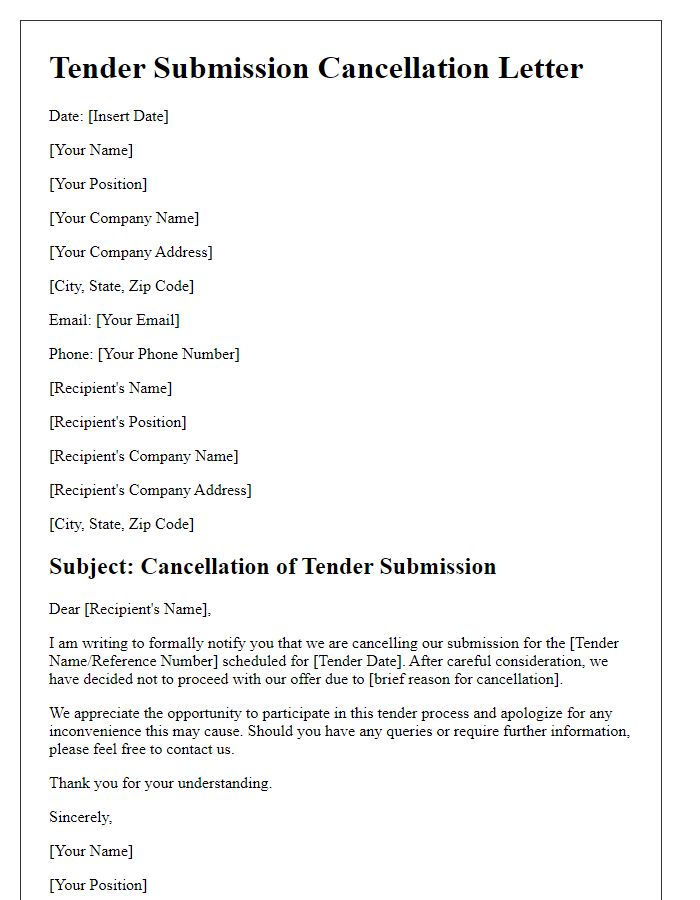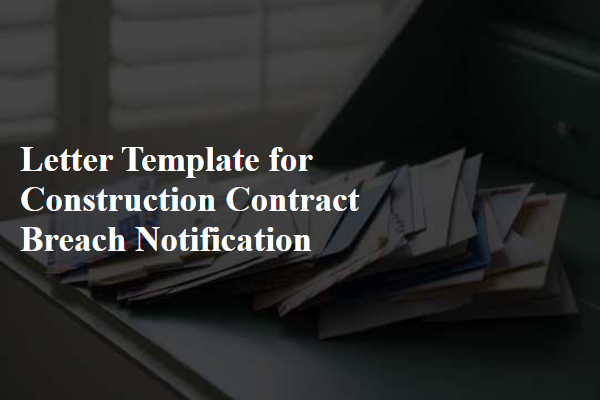Are you in a situation where you need to withdraw your construction bid? It can be a tricky process, but communicating clearly and professionally is key. A well-crafted letter can help you explain your decision without burning bridges, ensuring you maintain positive relationships in the industry. Let's dive into how to write this important document and ensure you do it rightâread on for tips and a helpful template!

Clear Subject Line
Construction bid withdrawal notifications are essential for maintaining transparency and professionalism in the bidding process. Due to unforeseen circumstances related to project management resources, we regret to inform that our company, XYZ Construction, must withdraw our submitted bid for the Riverside Community Center project, officially dated September 20, 2023. This decision comes after careful evaluation of current workload and material supply constraints, which unfortunately do not align with the project timelines. We sincerely apologize for any inconvenience this may cause and appreciate the understanding of the City Council's procurement department in this matter.
Detailed Project Information
A construction bid withdrawal involves formally retracting a proposal for a construction project. Essential elements include project details such as the project name (e.g., "Downtown Mixed-Use Development"), project location (e.g., "123 Main St, Springfield"), submission date (e.g., "October 1, 2023"), and bid amount (e.g., "$500,000"). The reason for withdrawal must be documented, whether due to unforeseen circumstances, financial constraints, or project scope changes. Affected stakeholders include project owners (e.g., "Springfield Development Corporation"), subcontractors, and suppliers. Highlighting the importance of timely communication maintains professional integrity and may influence future project opportunities. Including a contact for follow-up clarifies the withdrawal process.
Explicit Withdrawal Statement
In the construction industry, an explicit withdrawal statement is crucial when a contractor needs to retract a submitted bid. This formally notifies the project owner of the withdrawal, ensuring compliance with contractual obligations and maintaining professionalism. The statement should include specific details like the project name, bid number, submission date, and reasons for withdrawal, such as unforeseen circumstances or calculation errors. Clear communication fosters transparency and trust between contractors and clients, avoiding potential disputes. It is also advisable to send the withdrawal statement via certified mail to ensure receipt and maintain a record for future correspondence.
Reason for Withdrawal
A construction bid withdrawal may arise due to unforeseen circumstances such as escalating material costs specifically in steel and lumber that have surged by over 20% in the past three months. Additionally, labor shortages in the region, particularly in skilled trades due to a 15% decline in available workforce, have significantly impacted project feasibility and timelines. Regulatory changes, such as updated building codes introduced by local government agencies, may also necessitate a reevaluation of project scope and budget constraints. In light of these compounding factors, it becomes prudent to withdraw the bid to ensure compliance and prevent potential financial liabilities.
Professional Apology and Courtesy
Withdrawal of construction bids can occur due to various factors, including financial constraints or project reevaluations. A formal written notice should express regret for the situation, maintaining professionalism to preserve potential future collaborations. Include specific details such as the bid number (to reference the specific project), the date of the original submission, and any pertinent deadlines in the notification. A courteous tone is essential, acknowledging the impact of the withdrawal on stakeholders while expressing a willingness to explore future opportunities.













Comments